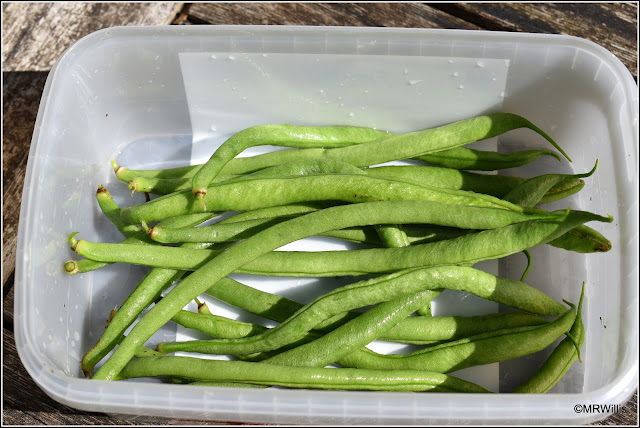When I planted out 20 multi-sown clumps of onion seedlings on 16th March, I had high hopes, because I used this technique with success in 2019. However, the onions have done very badly. I put this down to three factors:
1. The weather. It has been exceptionally dry here for several months.
2. Poor light (=bad siting). I planted the onions next to a row of beetroot, which produced a lot of foliage that shaded the onions too much. Also, I kept the bed netted to deter "diggers", which will also have reduced the available light.
3. A plague of Blackfly (aphids) which weakened the onion foliage. It has been the worst year for Blackfly that I have ever experienced.
Today I decided to cut my losses and dig up such onions as there were. Their foliage had well and truly flopped and I assessed that they were unlikely to grow any bigger.
This is definitely a disappointment, but looking on the bright side I do now have a couple of pounds of usefully-small onions. The ones you get in shops are usually quite big - often too big, meaning that you end up having to use half of one and keep the rest in clingfilm or something.
If I was a pickling sort of person, I'd probably be overjoyed with onions like this. They are probably just the right size for pickling!
Anyway, to offset the negative vibes from these onions, let me just show you a picture of my tomatoes, which are beginning to ripen in quantity now:
This year I made a conscious decision to grow fewer tomatoes than usual. Last year I let many of my bigger plants produce 5 or 6 trusses of fruit, which not only made the plants top-heavy and hard to keep upright, but also gave us a huge harvest. Much of this was made into sauce / passata, and we still have some of it in the freezer. This year, I have stopped most of my big plants after 3 or 4 trusses. Even so, I think we will have plenty of tomatoes...



















































